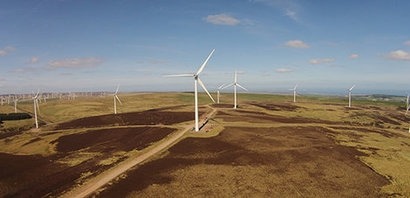
Currently, Nestlé’s draws all of its grid supplied electricity in the UK and Ireland from renewable sources but the newly commissioned wind farm will generate new power that will initially cover half the company’s electricity needs. The new deal involves an initial 15 year partnership with Community Wind Power and will see a brand new wind farm opening in Dumfries and Galloway in the first half of 2017, consisting of nine wind turbines. This will generate approximately 125 GWh of power per year, enough to supply the annual demands of 30,000 homes.
“We announced back in April that all of our grid-supplied electricity is coming from renewable sources but today’s announcement takes things a huge step further” said Dame Fiona Kendrick, Chairman and CEO of Nestlé UK & Ireland. “This is a newly commissioned wind farm, generating new energy, creating capacity that didn’t previously exist and capable of providing half of our electricity needs. It’s a proud moment for us and means we have reached another key milestone in our efforts to become a sustainable business.”
Rod Wood, Managing Director, Community Windpower, added that the company is delighted to be working with Nestlé by providing 50 percent of their energy requirements from its Sanquhar community wind farm project. As a leading party within the RE100, Nestlé’s commitment to sustainable resourcing is exemplary and the partnership is testament to that.
According to Emily Farnworth, RE100 Campaign Director, Nestlé understands very clearly that climate change represents a threat to its business while recognising that renewable energy is part of the solution. For that reason it intends to source 100 percent of its electricity across its global operations from renewables. This in turn has sent a strong market signal, via RE100, that business demand for renewables is rising. RE100 is a global initiative to engage, support and showcase influential companies committed to using 100 percent renewable power. Nestlé is also attempting to reduce its UK carbon footprint by 40 percent by 2020 but it is likely this target will be reached or exceeded well ahead of schedule.
For additional information:

